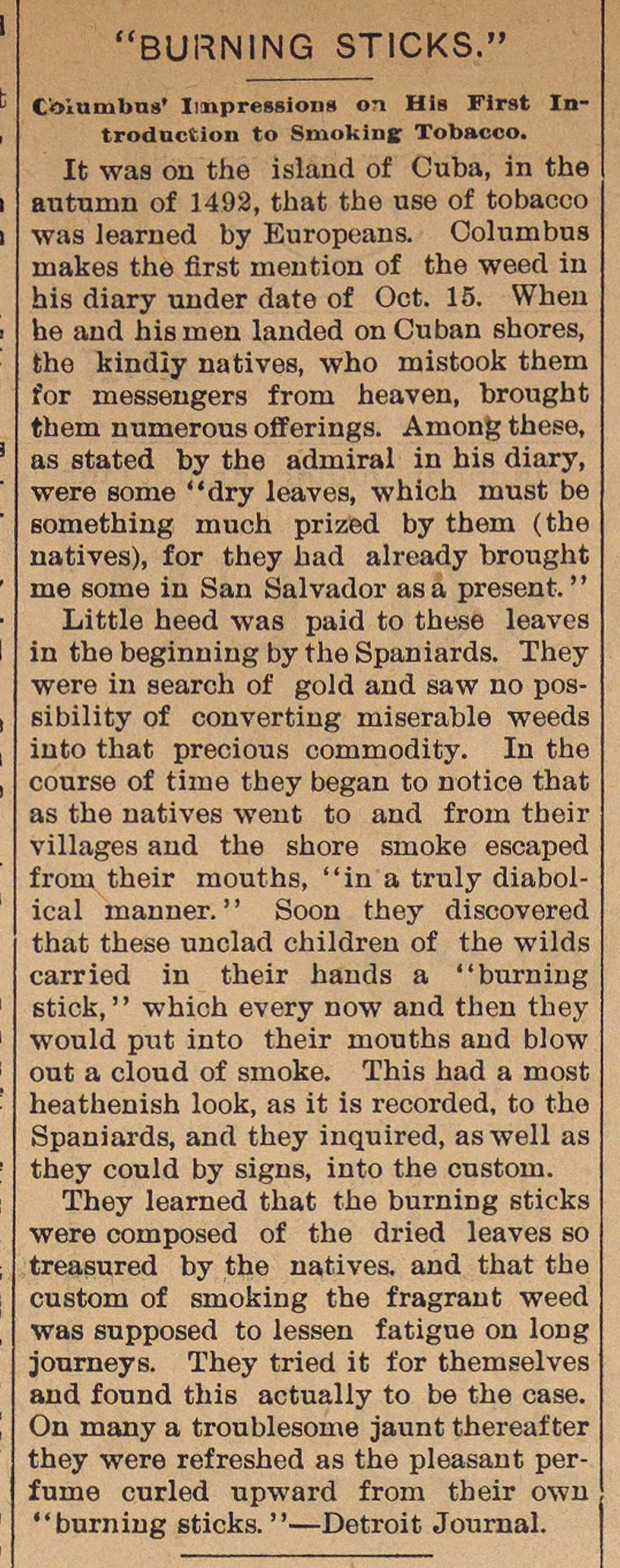"burning Sticks."

It was on the ïsland or Cuba, in the autumn of 1492, that the use of tobáceo was learned by Europeans. Columbas makes the first mention of the weed in his diary under date of Oct. 15. Wheu he aud his men landed on Cuban shores, the kindiy natives, who mistook them for messengers f rom heaven, brought them numerous offerings. Among these, as stated by the admiral in his diary, were some "dry leaves, which must be something much prized by them (the natives), for they had already brought me some in San Salvador asa present." Little heed was paid to these leaves in the beginning by the Spaniards. They were in searoh of gold and saw no possibility of converting miserable weeds into that precious commodity. In the course of time they began to notice that as the natives went to and from their villages and the shore smoke escaped from their mouths, "in a truly diaboiical manner. ' ' Soon they discovered that these unolad ohildren of the wilds carried in their hands a "burning etick, ' ' which every now and then they would put into their mouths and blow out a cloud of smoke. This had a most heathenish look, as it is recorded, to the Spaniards, and they inquired, aswell as they could by sigus, into the custorn. They learned that the burning sticks were composed of the dried leaves so treasured by the natives. and that the custom of smoking the fragrant weed was supposed to lessen fatigue on long jonrneys. They tried it for themselves and found this actually to be the case. On many a troublesome jaunt thereaf ter they were refreshed as the pleasant perfume curled upward from their own "burniiug
Article
Subjects
Ann Arbor Argus
Old News